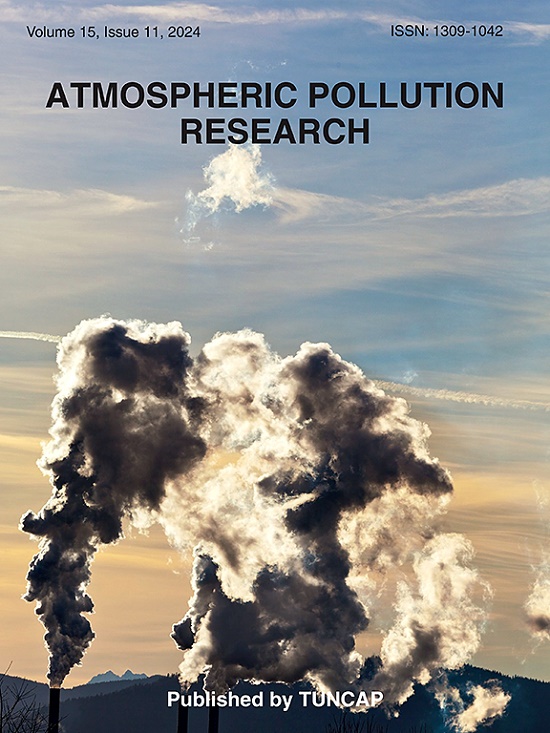Assessment of pollution sources and health risks of black carbon aerosols in industrial cities of Northwestern China using light absorption observations
IF 3.9
3区 环境科学与生态学
Q2 ENVIRONMENTAL SCIENCES
引用次数: 0
Abstract
Black carbon (BC) aerosols have notably negative impacts on climate, environment, and public health. However, current knowledge of the sources and health hazards of BC remains limited. Equivalent black carbon (eBC) measurements were conducted using an AE33 aethalometer in Urumqi, China, from July 2022 to April 2023. The temporal variability, potential pollution areas and health hazards of fossil fuel (eBCff) and biomass burning (eBCbb) sources were analysed. The average concentrations of eBCff and eBCbb were 1.3 μg m−3 and 0.5 μg m−3, respectively, highlighting the dominant role of fossil fuel combustion. In winter, due to increased coal heating and industrial emissions under adverse weather conditions, the contribution rate of eBCff surged to 80.3% (2.44 μg m−3). The highest concentrations of eBCbb were observed in spring (0.71 μg m−3), influenced by pre-sowing burning of agricultural residues. The concentrations of eBCff were higher during the day than at night, with a morning peak due to vehicular emissions. High concentrations of eBCff and eBCbb mainly originate from pollution sources around the observation site, along with residential and agricultural areas to the southeastern. Regional transport between cities on the northern slopes of the Tianshan Mountains and long-range drift from Central Asian countries also had important effects on eBCff and eBCbb. Health risk assessments revealed that carcinogenic risks (CR) from eBC exceeded acceptable levels by two orders of magnitude, with passive smoking equivalents (PSC) four times higher in winter than in summer. Our findings highlight the significant environmental and public health benefits of reducing fossil fuel consumption.
求助全文
约1分钟内获得全文
求助全文
来源期刊

Atmospheric Pollution Research
ENVIRONMENTAL SCIENCES-
CiteScore
8.30
自引率
6.70%
发文量
256
审稿时长
36 days
期刊介绍:
Atmospheric Pollution Research (APR) is an international journal designed for the publication of articles on air pollution. Papers should present novel experimental results, theory and modeling of air pollution on local, regional, or global scales. Areas covered are research on inorganic, organic, and persistent organic air pollutants, air quality monitoring, air quality management, atmospheric dispersion and transport, air-surface (soil, water, and vegetation) exchange of pollutants, dry and wet deposition, indoor air quality, exposure assessment, health effects, satellite measurements, natural emissions, atmospheric chemistry, greenhouse gases, and effects on climate change.
 求助内容:
求助内容: 应助结果提醒方式:
应助结果提醒方式:


